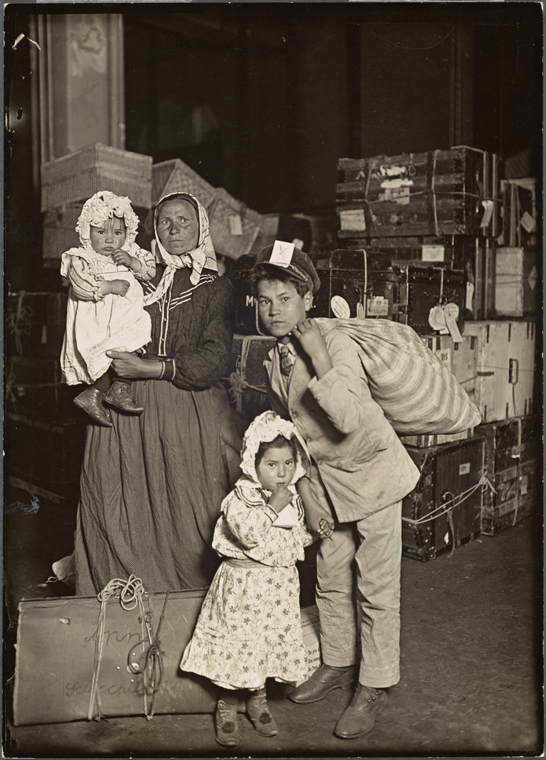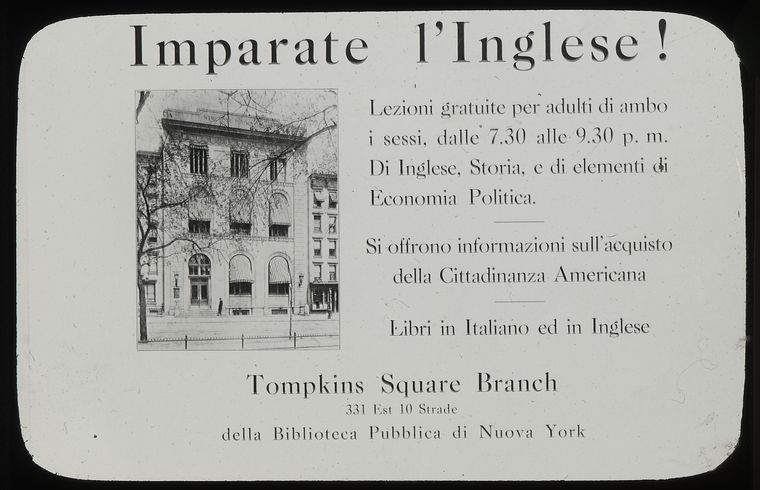5 Ways to Research Your Italian Heritage Without Leaving Home
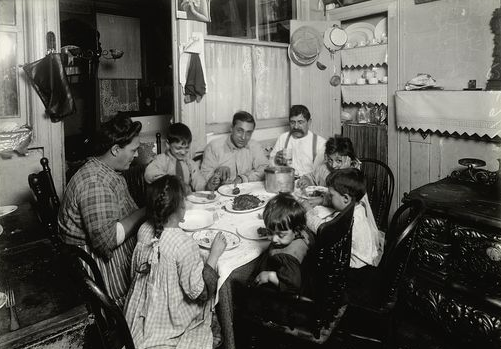 An Italian family has supper, East Side, New York City, 1915. Image ID 464293
An Italian family has supper, East Side, New York City, 1915. Image ID 464293
Over four million Italians entered the United States between 1880-1930. Are your ancestors among them?
To get started exploring your Italian roots, you can begin as you would with all family history research:
Start with what you know, find out what your family knows, and use genealogical records to work your way backwards and uncover the unknown.
Both United States records and family knowledge are essential in revealing what is arguably the most important piece in progressing with your Italian genealogy quest: your ancestors’ town of birth. Italian records are kept at the local level, so this elusive detail is necessary for locating ancestors prior to their immigration to the United States.
Though your research will undoubtedly take you to many libraries, archives, and records repositories, the following resources will help you discover generations of Italian ancestors—all without having to leave your home.
This select list of websites will help you search for records of your family and guide you in locating Italian repositories where records are stored.
FamilySearch
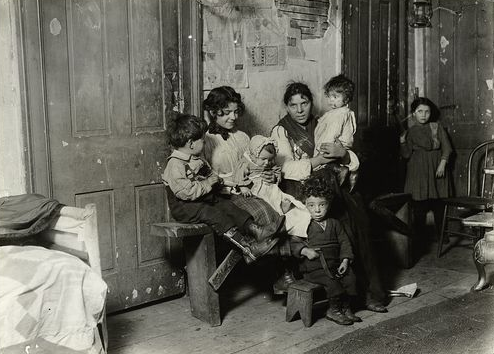 An Italian family sits for its portrait in a Chicago tenement near the Hull House, 1910. Image ID 464271
An Italian family sits for its portrait in a Chicago tenement near the Hull House, 1910. Image ID 464271
FamilySearch is the largest source of online records for Italian genealogical research (Powell). Explore the Italy research page to find records of births, marriages, deaths, Catholic Church records, censuses, military conscriptions, and more. You will need to know your family's ancestral town to search many of these records, as only some collections are indexed and searchable by name.
If you are not yet ready to research Italian records, FamilySearch also provides access to a range of United States records, including censuses, passenger lists, vital records indexes, and many others. See tips for Italian genealogical research in FamilySearch’s Wiki and Learning Center.
Italian Passenger List Indexes
The National Archives provides access to the Italians to America Passenger Data File, 1855-1900. This collection is an index of over 800,000 passengers to the U.S., who identified their country of origin as Italy or an Italian region.
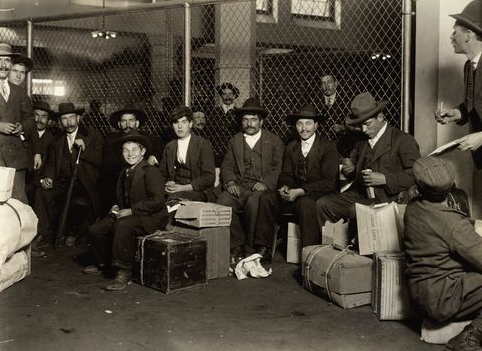 A group of Italians in the railroad waiting room, Ellis Island, 1905. Image ID 212054
A group of Italians in the railroad waiting room, Ellis Island, 1905. Image ID 212054
Records may include each passenger's name, age, town of last residence, destination, sex, occupation, literacy, and country of origin, among other details. This data is also available through Steve Morse’s One Step website.
Portale Antenati
The Portale Antenati (The Ancestors Portal) offers access to records held in State Archives throughout Italy, including civil registration documents and military records. Though some State Archives’ records have yet to be digitized and indexed, this portal also includes contact information and collection details for each archive.
Comuni-Italiani
Comuni-Italiani provides information and statistics on Italy's regions, provinces, and municipalities, and is a useful tool for locating Town Archives throughout Italy. Because Italian towns and parishes created nearly all genealogically useful records, your research will most likely lead you to the Town Vital Records Office for the community where your ancestors lived.
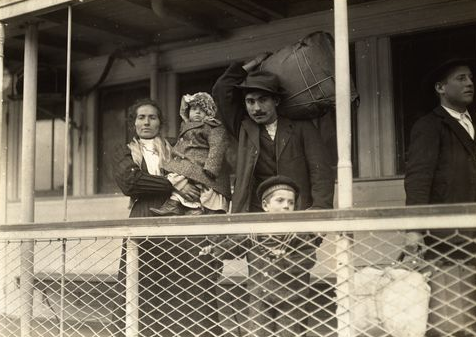 An Italian family en route to Ellis Island. Image ID 212020
An Italian family en route to Ellis Island. Image ID 212020
Use Comuni-Italiani to find the contact information of municipal offices throughout Italy. This resource provides a list of all towns in each province, and may assist you in locating ancestral towns for your family.
Italian Catholic Church Directories
Church records can be immensely helpful in your Italian genealogy research. Unlike civil records, church records were recorded systematically and uninterruptedly since the 1500s.
With knowledge of your family’s ancestral town, you may search for town parishes through ChiesaCattolica.it, the website of the Italian Catholic Church. The parish search engine, Parrocchie.it can also be used to locate churches throughout Italy. While these directories only provide information on active parishes, records of churches that are no longer in use might have been transferred to a nearby church, such as the town’s Mother Church or cathedral.
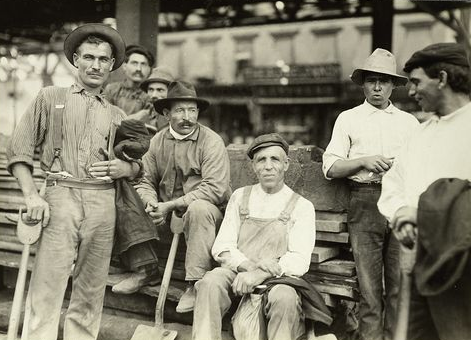 A group of Italian street laborers, working under the Sixth Avenue Elevated Railway, New York City, 1910. Image ID 464269
A group of Italian street laborers, working under the Sixth Avenue Elevated Railway, New York City, 1910. Image ID 464269
Attend the library’s class: Italian Genealogy Resources: Finding Records for an Italian Ancestor to learn more about the history of Italian immigration and record keeping, how to find your family’s ancestral town using U.S. records, and how to begin research with Italian records.
For strategies on beginning family history research, attend the Genealogy Essentials: Getting Started class or stop by the Milstein Division to get started.
Further Reading
Italian Genealogy Handbooks
- Finding Italian Roots: The Complete Guide for Americans
- A Genealogist's Guide to Discovering Your Italian Ancestors
- Italian Genealogical Records: How to Use Italian Civil, Ecclesiastical & Other Records in Family History Research
Handbooks for Getting Started
- Finding your Roots: Easy-to-do Genealogy and Family History
- Crash Course in Genealogy
- Family History 101: A Beginner's Guide to Finding Your Ancestors
Please email genealogy reference librarians at history@nypl.org if you need help with your research.
Read E-Books with SimplyE
 With your library card, it's easier than ever to choose from more than 300,000 e-books on SimplyE, The New York Public Library's free e-reader app. Gain access to digital resources for all ages, including e-books, audiobooks, databases, and more.
With your library card, it's easier than ever to choose from more than 300,000 e-books on SimplyE, The New York Public Library's free e-reader app. Gain access to digital resources for all ages, including e-books, audiobooks, databases, and more.
If you don’t have an NYPL library card, New York State residents can apply for a digital card online or through SimplyE (available on the App Store or Google Play).
Need more help? Read our guide to using SimplyE.
